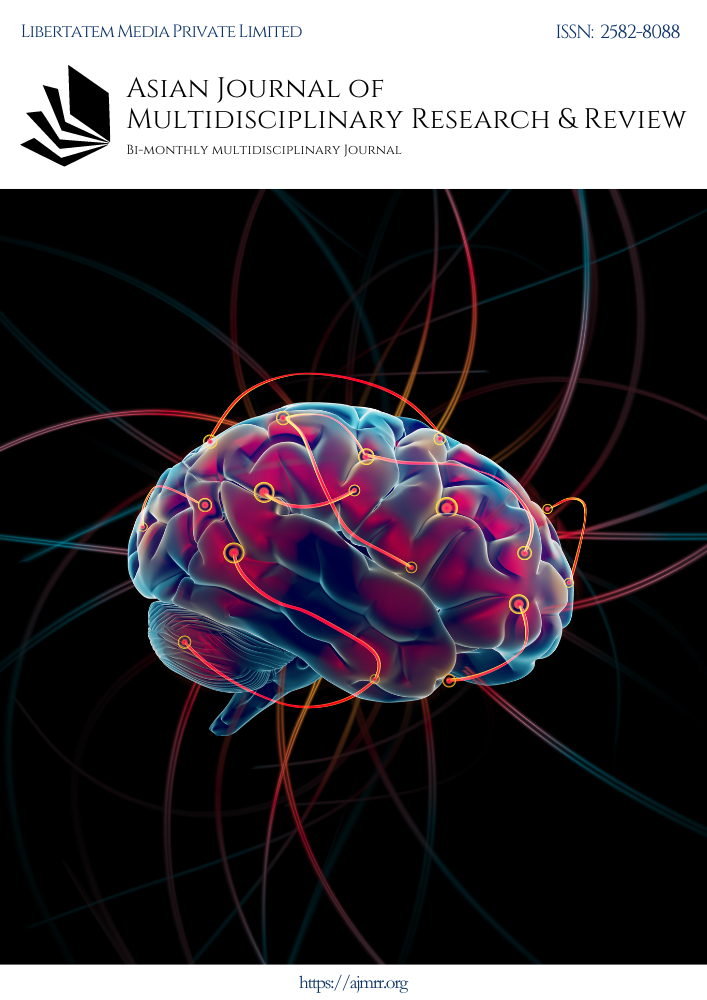Presigen IV: A Novel Biocellular Approach to Intraocular Pressure Regulation and Glaucoma Management
DOI:
https://doi.org/10.55662/AJMRR.2024.5203Keywords:
Elevated intraocular pressure (IOP), glaucoma, ocular hypertension, various retinal disorders, Presigen IV, novel biocellular stimulation formulaAbstract
Elevated intraocular pressure (IOP) is a critical factor in the progression of several ocular conditions, including glaucoma, ocular hypertension, and various retinal disorders. This study introduces Presigen IV, a novel biocellular stimulation formula developed from an applied Biocellular-Sensory Matrix (BSM-IV). Through extensive clinical trials, Presigen IV has shown remarkable efficacy in reducing IOP and decreasing light sensitivity in patients with various ocular conditions.
The initial trial, involving 35 participants with various ocular hypertension and glaucoma, demonstrated that 87% of subjects experienced significant reductions in IOP. This paper explores the mechanism underlying Presigen IV’s effectiveness, its clinical outcomes, and its potential role in the broader context of the management of elevated IOP across various ocular conditions. It examines the role of inflammation in ocular disease progression and the emerging importance of biomarkers in early diagnosis and personalized treatment strategies. The study also highlights the incorporation of ocular supporting nutrients, such as allicin, in Presigen IV's formulation, which has been linked to reducing inner eye distress and inflammation, thereby also decreasing the risk of serious eye diseases like age-related macular degeneration and cataracts.
By synthesizing recent advancements in ocular research and treatment, this study positions Presigen IV as a promising innovation in the management of elevated IOP, with the potential to revolutionize treatment strategies and improve patient outcomes across a spectrum of ocular conditions. As research continues to unravel the intricacies of ocular pathophysiology and refine treatment approaches, Presigen IV represents a significant step forward in the quest to preserve vision and improve the lives of millions affected by sight-threatening conditions related to elevated IOP.
Downloads
References
Chen, Y. Y., Hu, H. Y., Chu, D., Chen, H. H., Chang, C. K., & Chou, P. (2018). Patients with primary angle-closure Glaucoma have lower systemic blood pressure than patients with primary open-angle Glaucoma. American Journal of Ophthalmology, 185, 75-82. https://doi.org/10.1016/j.ajo.2017.10.021
Chen, Y. Y., Hu, H. Y., Chu, D., Chen, H. H., Chang, C. K., & Chou, P. (2019). Red blood cell distribution width as a potential prognostic biomarker in patients with primary angle-closure Glaucoma. Acta Ophthalmologica, 97(7), e967-e974. https://doi.org/10.1111/aos.14098
Golubnitschaja, O., Flammer, J., & Golubnitschaja, O. (2018). Identification of biomarker candidates for Glaucoma: A proteomics study of human aqueous humor. Investigative Ophthalmology & Visual Science, 59(9), 1731-1737. https://doi.org/10.1167/iovs.17-23028
Sacca, S. C., Pulliero, A., & Izzotti, A. (2016). The dysfunction of the trabecular meshwork during Glaucoma course. Journal of Cellular Physiology, 230(3), 510-525. https://doi.org/10.1002/jcp.24826
Warjri, G. B., & Senthil, S. (2022). Imaging of the ciliary body: A major review. Seminars in Ophthalmology, 37(6), 711-723. https://doi.org/10.1080/08820538.2022.2051014
Xu, H., Chen, M., & Forrester, J. V. (2014). Para-inflammation in the aging retina. Progress in Retinal and Eye Research, 45, 44-57. https://doi.org/10.1016/j.preteyeres.2014.11.001
Downloads
Published
Issue
Section
License

This work is licensed under a Creative Commons Attribution-NonCommercial-ShareAlike 4.0 International License.
License Terms
Ownership and Licensing:
Authors of research papers submitted to the Asian Journal of Multidisciplinary Research & Review (AJMRR) retain the copyright of their work while granting the journal certain rights. Authors maintain ownership of the copyright and grant the journal a right of first publication. Simultaneously, authors agree to license their research papers under the Creative Commons Attribution-ShareAlike 4.0 International (CC BY-SA 4.0) License.
License Permissions:
Under the CC BY-SA 4.0 License, others are permitted to share and adapt the work, even for commercial purposes, as long as proper attribution is given to the authors and acknowledgment is made of the initial publication in the Asian Journal of Multidisciplinary Research & Review. This license allows for the broad dissemination and utilization of research papers.
Additional Distribution Arrangements:
Authors are free to enter into separate contractual arrangements for the non-exclusive distribution of the journal's published version of the work (e.g., posting it to institutional repositories or publishing it in books), provided they acknowledge the initial publication of the work in the Asian Journal of Multidisciplinary Research & Review.
Online Posting:
Authors are encouraged to share their work online (e.g., in institutional repositories or on personal websites) both prior to and during the submission process to the journal. This practice can lead to productive exchanges and greater citation of published work.
Responsibility and Liability:
Authors are responsible for ensuring that their research papers do not infringe upon the copyright, privacy, or other rights of any third party. The Asian Journal of Multidisciplinary Research & Review disclaims any liability or responsibility for any copyright infringement or violation of third-party rights in the research papers.







